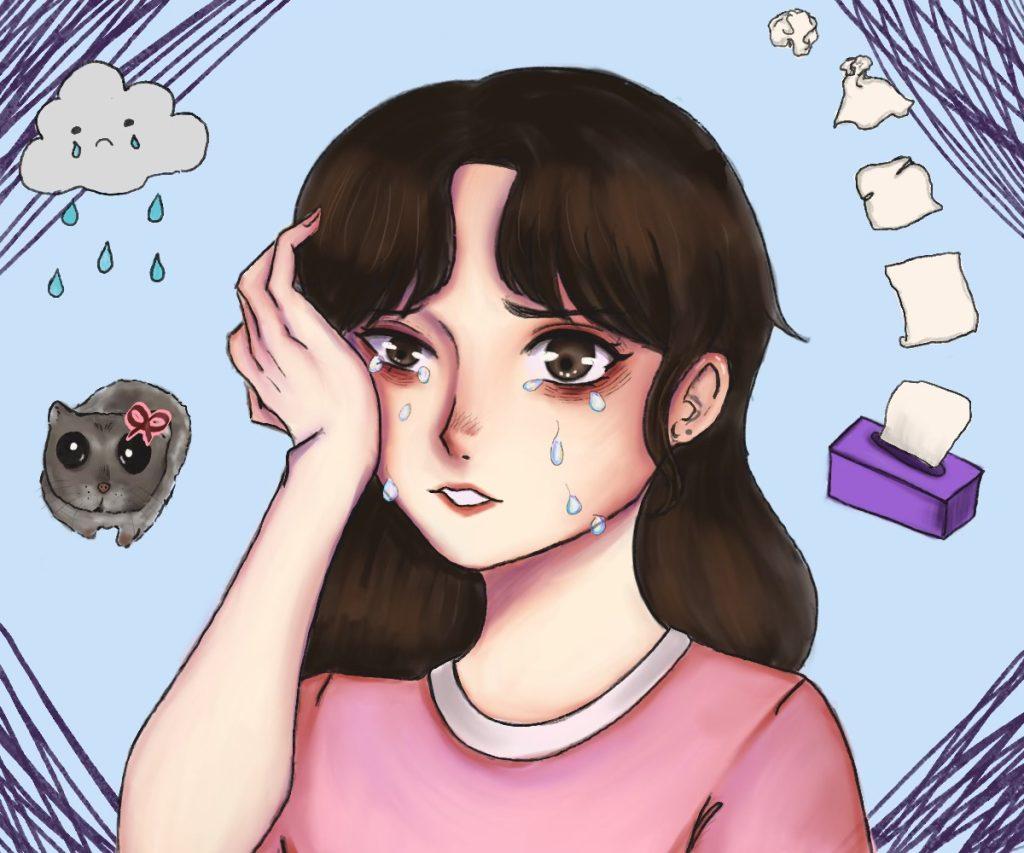Transparency Item: The Perspectives section of the Graphic is comprised of articles based on opinion. This is the opinion and perspective of the writer.
Ever since I was a child, I have been a “crier.” By crier, I mean the type of person who cries often in a variety of circumstances.
When I am happy, I cry. When I am sad, I cry. When I am angry, I cry, and so on and so forth.
For me, crying has been a means of expressing extreme emotions, whether it is an extremely positive emotion or an overwhelmingly negative one.
I have always felt a sense of shame for being a frequent crier. I feel as though I am overly emotional and somehow that makes me subordinate to those who can suppress their feelings.
This is a common experience because many people associate strong emotions with weakness, according to an article by North Brisbane Psychologists.
In some settings, my shame is appropriate. It is not professional to cry at work. It is rude to cry to someone who does not have the emotional capacity to comfort me.
That being said, there are some settings where it is both appropriate and useful to cry. Crying can help people self-soothe and emotionally regulate, according to a National Library of Medicine study.
When I was in late elementary school, I would cry into my goggles during swim practice if a set was too difficult or my coach yelled at me too loudly. It was helpful to express my frustration.
I didn’t get out of the pool and stop swimming because I was crying. I didn’t quit the swim team because it was too much for me to handle.
I became resilient because I was able to emotionally regulate through crying.
Crying into my goggles taught me that it was OK to have negative emotions. At the same time, just because I was frustrated didn’t mean I had to quit.
Crying increases both physical and emotional health, according to a Harvard Medical School article.
Crying can prevent repressive coping which is associated with “a less resilient immune system, cardiovascular disease, and hypertension,” according to a Harvard Medical School article.
Crying can help fight against mental health conditions such as anxiety and depression. It can also increase healthy attachment to friends and family, according to an article from Harvard Medical School.
The inherent vulnerability of crying can strengthen healthy attachments. Patients report that seeing their therapists cry helps them become more vulnerable, according to the American Psychological Association.
Vulnerability is vital to form long lasting relationships. Both happy and sad tears are a gateway to showing a side of ourselves we may try to conceal.
Tears can express what people are reluctant to say in words and signal to those around us that we need help, according to an article from Time.
Tears are a tool that helps us give up our pride and ask for help, sometimes involuntarily. Although this may cause some discomfort, it deepens our friendships by showing how we truly feel.
Additionally, crying promotes emotional relief that make us resilient; it allows us to overcome our feelings to conquer our challenges.
All things considered, crying has a myriad of benefits when expressed in an appropriate setting. It helps the crier by providing emotional relief and creating vulnerable connections. It shows people who love the crier that their loved one needs support.
Consider letting yourself cry without shame.
___________________
Follow the Graphic on X: @PeppGraphic
Contact Caitlin Murray via email: caitlin.murray@pepperdine.edu


